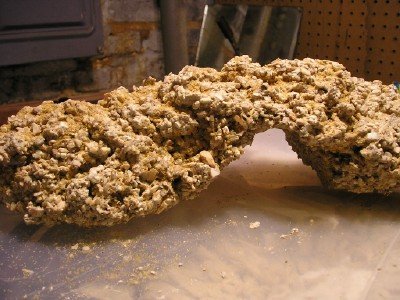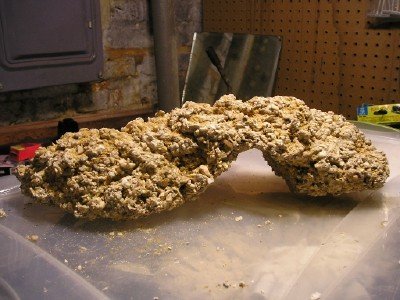some information for what its worth! I have seen many different versions and methods to make diy rock I dont know if anyone has noted this information yet. I am planning on doing a rock wall in my 180g and I was curious since there are so many methods I started to make a test and I asked my wife for some info. My wife is a project manager for a large construction company and has taken multiple concrete courses in college and loves working with concrete. She stated that you do not want to dry your rock by putting it in the oven, this only dries out the rock by evaporation. the cement uses water to cure. Also she stated as soon as the rock is solid enough to move into water it should be done, concrete cures stronger under water. She stated that the total cure phase for the strength of concrete is 28 days you can start using concrete for load reasons after 7 days but it is not recommended. I know that in an aquarium the rocks arent going to be very load bearing but just some info, there going to be in water this long anyways for the ph to regulate.
So in other words you dont have to let the rock dry before putting it in water, put it in water as soon as possible and dont put it in the oven. Just some info hope it helps someone if this hasnt already been stated. good luck I hope my rock turns out well especially if she helps lol




